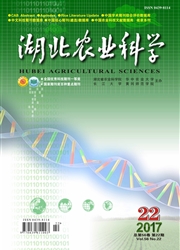

 中文摘要:
中文摘要:
农作物碳汇对陆地生态系统碳循环以及全球气候变化有着不容忽视的影响。测算并分析了中国主要农作物碳汇的历史阶段特征和空间差异,结果表明,1991~2008年中国农作物碳汇量呈现"蝙蝠型"波动上升趋势,由1991年的55 345.2万t增加至2008年的74 386.8万t,增长了34.41%。2008年农作物碳汇的空间差异特征明显:第Ⅰ类主要为农业大省或者是糖类作物大省,主要分布于东北、华东、华中及西南地区,碳汇量在3 000万t以上;第Ⅱ类主要为农业次发达区域,主要分布于华中、西北及西南地区,碳汇量在1 000万~3 000万t;第Ⅲ类主要为直辖市、农业欠发达地区或耕地紧缺地区,主要分布于东南沿海、西南及西北地区,碳汇量在1 000万t以下。
 英文摘要:
英文摘要:
Crop carbon cycle for terrestrial ecosystem carbon cycle and global climate change impact can not be ignored.The paper estimates and analyzes the history of the main crops carbon sinks stage characteristics and spatial differences.It was found that from 1991 to 2008,Chinese crop of carbon sinks present ’bat-type’ wave upward trend in 1991 increased to 553.452 million tons to 743.868 million tons in 2008,that an increase of 34.41%.In 2008 Chinese agricultural carbon sinks with distinctive characteristics of spatial differences: the firstly class Ⅰ is mainly agricultural province or sugar crop province,which concentrated in the northeast,east,central and southwest regions,and the amount of carbon above 3 000 million tons;secondly class Ⅱ is agricultural underdeveloped area,which mainly distributed in central,northwest and southwest regions,and the amount of carbon between 10-30 million tons;thirdly class Ⅲ is mainly for municipalities,agricultural less developed area,shortage of arable land region,which concentrated on the southeast coast,southwest and northwest regions,and the amount of carbon under 10 million tons.
 同期刊论文项目
同期刊论文项目
 同项目期刊论文
同项目期刊论文
 期刊信息
期刊信息
